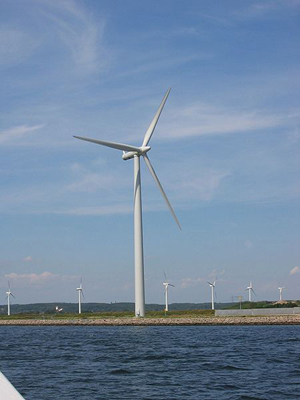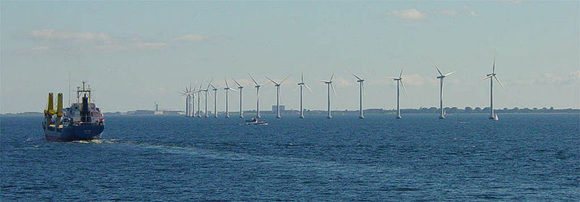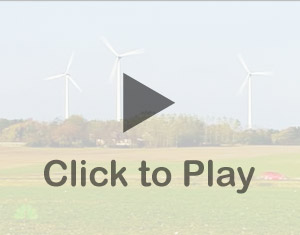Wind Power
Did you ever blow bubbles as a kid? You use moving air—your breath—to create the energy to blow the bubbles. This same idea can also provide us with clean renewable energy just by using the wind. Wind power generates electricity with moving air. The blades on a windmill turn when struck by the wind. The turning of the blades cause a turbine to spin and generate electricity. Roll over the image below to learn more about the blades, generator and yaw drive of a modern wind turbine.
Wind power accounts for about one percent of global electricity, but some countries use a greater percentage than others. Denmark leads the world in wind energy, getting about 20 percent of its electricity from the wind. Click through the tabs to learn more about wind power.
Modern Wind Power

Europe uses the most wind power. Denmark, Germany, and Spain have thousands of wind turbines. Check out this video from PBS about modern wind turbines and how to capture energy from the wind to convert it into electricity. Notice how wind power is helpful to the people both economically and environmentally.
Click on the image above to watch About
NOVA: Wind Power
The Economics of Wind Power

Wind power is one of the fastest growing sources of renewable energy in the world. In 2006, wind power cost just one-fifth of what it did in the 1980s. Remember how high cost is a big drawback for solar power? With wind power, the costs keep coming down, making it one of the most attractive sources of fossil fuel alternatives.
One factor that must be considered is that many sites with lots of wind are far from demand centers. In other words, the places best suited for lots of wind turbines are not necessarily where people live. So constructing roads, transmission lines, and substations would have to be built. But after construction, wind energy has virtually no cost associated with it, since it requires no purchase of fuel. In many parts of the world, and in some U.S. states, governments offer tax breaks, subsidies and other financial incentives to people and businesses to use wind power.
Wind Farms

Wind power plants are commonly called wind farms. They have clusters of dozens of wind turbines scattered over a large area of land. Check out these facts about wind farms:
- Wind turbines work best in steady winds of about six meters/second (13 mph). So wind farms must be situated in locations that have generally steady wind at about the right speed.
- Wind farms may be located on land or at sea. Those at sea are called offshore wind farms.
- The largest wind farm in the world is the Horse Hollow Wind Energy Center in Texas. It has 421 turbines and can power 220,000 homes.
- Wind farms generate electricity in 28 U.S. states. The top wind power states are Texas, California, Iowa, Minnesota, and Oklahoma.
- In 2006, U.S. wind farms produced enough electricity to power 4.9 million homes.
- Most wind farms are not owned by power utility companies. Instead, they are owned by private investors that sell the electricity to electric utilities.
Small Wind
How would you like a wind turbine in your backyard? Small wind refers to small-scale wind power that individual homes or businesses can use. They can even be installed on a roof and supply up to 25 percent of a home’s electricity. In the U.S., a home wind turbine will cost about $12,000 to $50,000 to install, but there are government incentive programs that may rebate as much as a 50 percent of the cost to homeowners who install wind systems. And some states offer government grants to cover almost all the expenses involved. Small wind systems will also begin to pay for themselves after about five to 10 years in electricity savings.
Click on the image above to watch The Power of Wind Engergy
